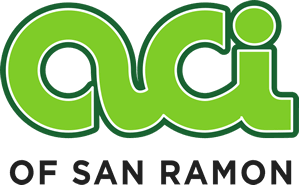
San Ramon
Stop Wasting Food
REDUCE WASTE BY MANAGING YOUR FOOD. IF YOU HAVE FOOD SCRAPS USE OUR FOOD SCRAP COLLECTION PROGRAM.
40% OF ALL FOOD IN AMERICA IS WASTED!
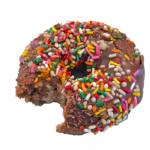
In the U.S., food scraps and yard waste together currently make up more than 30 percent of what we throw away and could be composted instead. Californians throw away nearly 6 million tons of food scraps or food waste each year. This represents about 18 percent of all the material that goes to landfills.
California law (SB 1383, Lara, Chapter 395, Statutes of 2016) targets a 50 percent reduction in the landfilling of organic waste in 2022. By 2025, that reduction target is 75 percent.
In order for California to reach its goal of 75% source reduction, recycling and composting food waste must be addressed.
Food scraps and food-soiled paper materials are to be placed in the green organics/composting containers under the City of San Ramon’s collection program.
BE FOODWISE…SMALL STEPS CAN REDUCE FOOD WASTE!
MANAGE FOOD BEFORE IT BECOMES WASTE
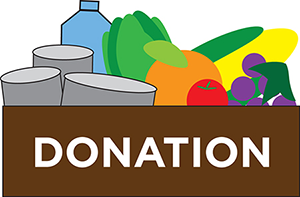
Before excess food becomes part of the organics/compost collection program, find ways to manage it more thoughtfully, such as reducing food waste at home or by working with groups to ensure that excess edible food is rescued.
- Visit: Savethefood.com for information on how to reduce food waste by meal planning, creative recipes, food-storage tips, community resources and more!
- Visit: www.calrecycle.ca.gov Organics/Food/Donation/ for information on Food Rescue and Food Banks in California.
FOOD PREPARATION AND STORAGE TIPS TO REDUCE WASTE
Check out these free apps offered by the USDA.
WHAT DO THOSE DATES REALLY MEAN?*
Reduce food waste by understanding food product date labels.
“BEST IF USED BY/BEFORE”
Indicates when a product will be of best flavor or quality. Not a purchase/safety date.
“SELL-BY”
Tells the store how long to display the product for sale for inventory management. Not a safety date.
“USE-BY”
Last date recommended for use of the product while at peak quality. Not a safety date except when used on infant formula.
Regardless of the date, consumers should always evaluate the quality of food prior to its consumption.
DON’T THROW IT OUT!**
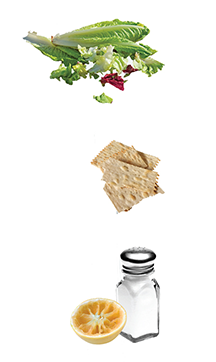
Try these tips to extend the life of your food and reduce food waste!
WILTED FOOD
Soaking in ice water for 5 to 10 minutes may reinvigorate wilted veggies.
STALE FOOD
Toast stale chips and crackers for a minute or two in a regular or toaster oven to crisp them.
SALTY FOOD
Add vinegar, lemon juice, or brown sugar—or dilute a soup or sauce with water, crushed tomatoes or unsalted broth.
USE THE HANDY KITCHEN PAIL TO REDUCE THE WASTE IN YOUR GARBAGE CONTAINERS
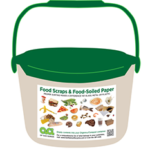
Store your non-edible food scraps and food-soiled paper in the pail until you empty it into the green organics/compost cart or bin. Please do not place the pail at the curb for collection.
ALL FRESH, FROZEN, COOKED & MOLDY FOOD SCRAPS & FOOD-SOILED PAPER BELONG, INCLUDING:
- all leftover food
- peels, pits & rinds
- eggs & dairy products
- bread, rice, pasta & other grains
- meats & bones
- coffee grounds & filters
- tea leaves & paper tea bags
- food-soiled paper take-out containers, napkins, plates, cups & towels
- food-soiled newspaper & paper bags
TIPS TO KEEP YOUR HANDY KITCHEN PAIL CLEAN
- You can line your pail with a paper bag, paper towels/napkins or newspaper or a certified compostable plastic bag. A list of certified compostable bags can be found at: www.bpiworld.org.
- Wipe out or rinse the pail with soapy water.
- Try sprinkling baking soda in the pail to absorb odors.
- Freeze your meats scraps and place them directly into the green container on collection day.
MAKE A PAIL LINER

You can use any type of paper. Try newspaper or brown kraft paper.
1. Fold paper as shown.
2. Fold the top corner down to the baseline to make a crease line. Unfold.
3. Fold the bottom left-hand corner up to the crease line just made.
4. Fold the bottom right-hand corner up to the opposite side.
5. Fold the top flaps downward.
6. Open out to create liner for kitchen pail.
Click here for a downloadable PDF of this information.
Sources:
*www.fsis.usda.gov
**www.savethefood.com
**Waste Free Kitchen Handbook, Dana Gunders, 2015.
